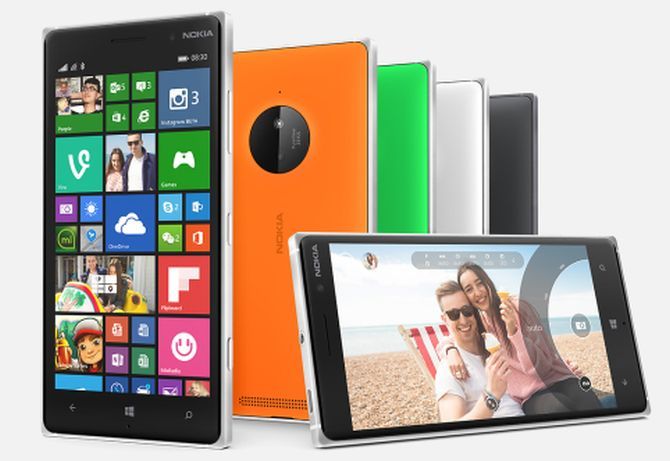With big dreams and high hopes of earning lakhs or even crores, more and more youngsters are getting into software development for smartphones.

Ankit Srivastava, 20, a third-year BTech student, made Rs 1 lakh in December. The business model: A music app for smartphones on the Google Android platform.
Contrast this with Akshit Rewari, a final-year BTech student from Delhi.
He developed a ping pong game for Android while learning programming. However, when he went to market it, he realised there were 4,000-5,000 similar games in the market.
Unable to sell in the congested segment, he's now working on three other apps. "To succeed, you need an idea that has never been done before," says Rewari.
With the advent of apps from 2009, there has been a surge in app developers. And, both success stories and those still trying to make it.
Rohan Laishram, 24, belongs to the former group. He has earned Rs 35 lakh from a scientific calculator app he developed while studying at Birla Institute of Technology three years ago. He still manages to earn Rs 60,000 to Rs 1 lakh every month.
With big dreams and high hopes of earning lakhs or even crores, more and more youngsters are getting into software development for smartphones, driven by such stories.
Yet, it's not as easy as it sounds. There are scores of people who try their luck and then turn programmers for others.

Sometimes, you have to go back to the drawing table. For example, Laishram's initial calculator had few takers in the first six months.
After going through the top apps in his category, he realised each lacked one feature or the other. He reworked and added all the possible functions to his calculator and offered a complete package.
The fortunes turned and his app now features among the top five scientific calculators on the Google Play Store, downloaded 1.8 million times.
Laishram relied on features. Srivastava depended on an aggressive marketing campaign.
His music player ranks among the top five and has seen 400,000 downloads in the past seven months.
"The apps that I used to play music had great functionalities but I didn't like their designs," Srivastava said. But he didn't know Android programming. Using YouTube, he taught himself, and then started taking small freelance projects, to get hands-on experience.

He made about Rs 1 lakh from 14 projects and used this money to develop and market the app. He got professional designs and videos made.
He spammed music groups on social networks with his app, submitted apps for review and feedback, and used online forums to market it.
In the first 20 days, all these efforts only managed to get him to the 40th rank. As he continued, the rank and downloads improved.

App economy
Mobile app developers are expected to witness unprecedented growth in the coming years. According to reports, Apple alone in 2014 had $15 billion of sales in paid apps and purchases made within apps.
Though Google has not revealed the figures of its sales, it said the company had paid at least $5 billion to developers in the past 13 months.
This is not including its own 30 per cent cut. Analysts, hence, put the sales at around $7 billion. This market is expected to touch $77 billion in 2017, according to various estimates.
"By 2017, mobile apps will be downloaded 268 billion times, generating revenue of more than $77 billion, and making apps one of the most popular computing tools for users across the globe," states a report published by Gartner.
In the next one year, researchers expect the world to have a little over 10 billion mobile internet devices.
 Reward areas
Reward areas
According to mobile analytics firm Flurry, the fastest growing app category was lifestyle and shopping (174 per cent growth over the previous year).
It was followed by utilities and productivity (121 per cent), messaging and social apps (103 per cent), health and fitness (89 per cent), travel (89 per cent), sports (74 per cent), news and magazines (49 per cent), music, media and entertainment (33 per cent), and games (30 per cent).
If a developer wants to make more money, it makes sense to have apps both on Android and in Apple stores.
As more smartphones are Android-based, a developer will see more downloads in Google's Play Store. However, iOS users spend more money on apps.
 For starters
For starters
Many individual developers are proficient in one of the two platforms, Android or iOS. They usually release the app for one operating system and after they become popular, go for the other platform.
Mostly, the development is outsourced to a freelancer. You might need to hire professional designers and a video editor on websites such as freelancer.com to make icons, screenshots, video and various other promotion tools.
Before downloading any software, people first look at the screenshots and video, and then make up their mind.
For both, the budget can range between Rs 10,000 and Rs 25,000. While publishing, take care the description is optimised for search engines.
Revenues
For revenues, developers usually have a free app and a paid one. The free version is supported by advertisements.
There are primarily two types of ads. For banner ads, the developer gets $0.2-1.5 for every 1,000 times the ad is displayed.
For full screen ads, $2-8 for every 1,000 times it is displayed. If the user wants to get rid of the ads, he or she can opt for the paid version.

The main hiccup
The premium or paid app market place is still building up. Device penetration for smartphones is going to surge in the next two years.
These are the pluses. However, Indian telecom companies are among the lowest in profitability, due to excessive spectrum charges and price competitiveness.
"This affects the investment made by the company in the data network infrastructure - 3G (third-generation services) penetration is still minuscule, hence effecting the app economics, usage and revenue," says Bibhu Kumar, chief of business, Zipurb.com.
 EXPERT TAKE: Bibhu Kumar
EXPERT TAKE: Bibhu Kumar
APP ADVICE
Starting point:
Create a map, take out the scratch pad, write and rewrite. Take your time flirting with the idea, sketching the details and laying down the game plan
Brainstorm your thoughts with a closed-user group. Remember, here is a method to get your digital product anywhere between Bhatinda to Barcelona. The world is the audience and your app is the actor
It's never too late and never too early for a great idea. We would still see emergence of more social sites and chat apps. So, do not take anything as a rule in the marketplace.
Positions can be dismantled and challengers can become leaders. You need to have a ground-breaking differentiated app. There will be no adopters for poor copies of already-existing apps
Tip: Don't fall in love with your idea too soon, too fast
Build a business model:
Spend your time understanding the market segment you want to address, invest in market research and target audience. Read user comments of similar apps on what users want
Address all aspects of revenue generation. Map your requirement, developments and resources costs. Build a detailed maxi-marketing approach, using targeted mobile advertising to the early adapters. Build revenue assumptions, crunch the numbers.
Attention to detail is a key to make the business case viable
It's a transactional world. The more the clicks, the more the views. All these give you more monetisation possibilities. Ask yourself…can you sell upgrades, implement micro-billing for rewards, awards?
Can you award your customers for viral marketing? Give reason for a user to come back, engage again. With itunes in Europe adopting policies like a refund in 15 days, you need to have real meat for users to have you on board and be committed to you. Your job is to build and establish your loyalty to your user base
Tip: If it doesn't seem viable, kill it or go back to the drawing board

Photograph: Akshit Rewari /Facebook
Development stage:
Build a solid back-end, always look at vertical integration or scalability and on to other families of apps. Sign up at the right time on various app stores and developer accounts to address time to market - don't leave it for the last minute
Focus on easy development practices and as much as you can use open source and PaaS (Platform as a Service) to develop your app faster, with minimum coding effort
Design your app skins. This is key for user accessibility. Look and feel, remember you are possibly addressing a global market place. Link the spins, test these out to a closed-user group, get feedback, make changes. Link the spins, test, change
Tip: Design is king. Build stickiness and implement your revenue model. Remember, users should have enough reasons to open your app repetitively and spend substantial time consuming your app services
Marketing and post-launch:
Launch in style and at the right time. There is nothing worse than "all dressed up and nowhere to go". Ensure you achieve your launch objectives of placement, marketing communication and feedback analysis
Keep a close watch on your marketing spend and check on all key business revenue number, downloads, average usage, transactional usage, etc. Watch all assumptions very closely. Pause if there is something amiss and make adjustments to your plans. Keep your antennae tuned in, listen to your users and talk to them. Make the required changes, improvise and re-build, if required
Tip: Remember, the best way to kill an app is to launch it half-baked. Don't deliver a shoddy job to your early adopters. The market will not spare a bad product and your app will die in its infancy. Version control is for improvisations, not for delivering half-baked products
The author is chief of business for Zipurb.com and chief executive of ExNxt.











